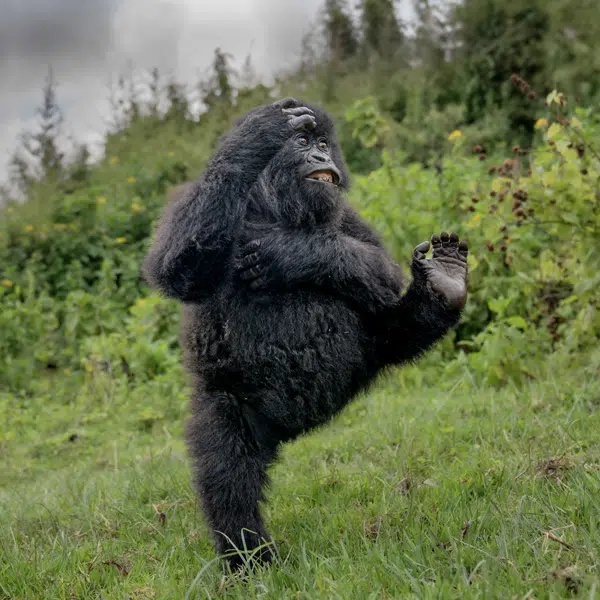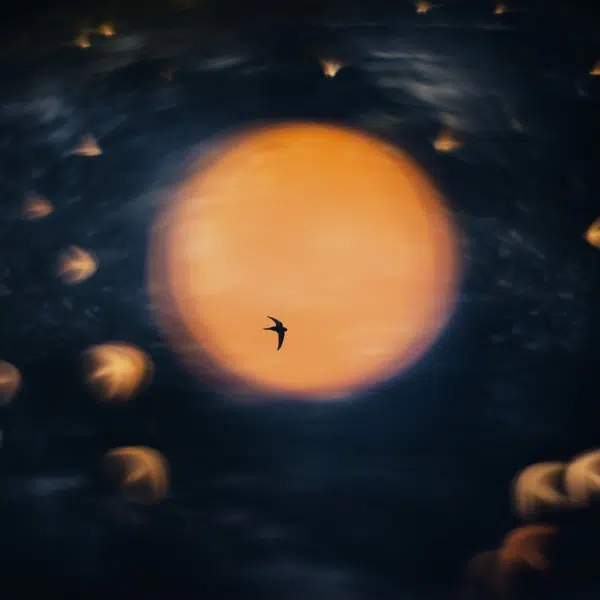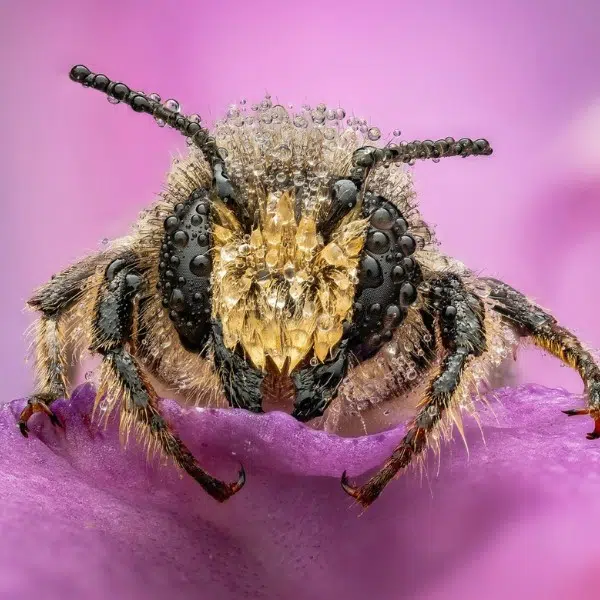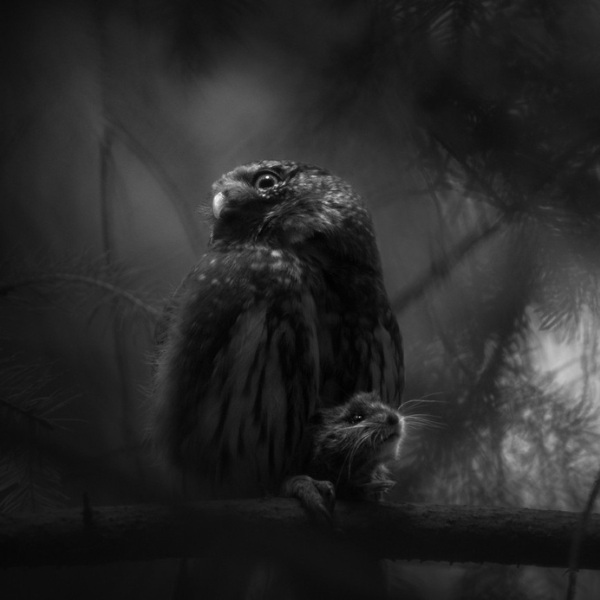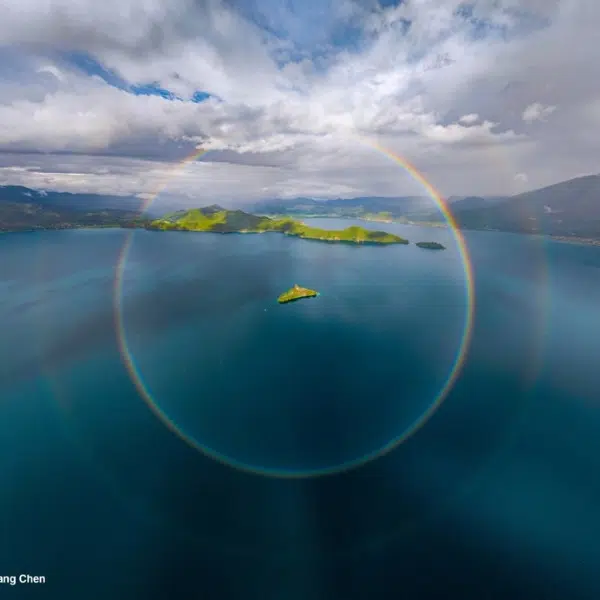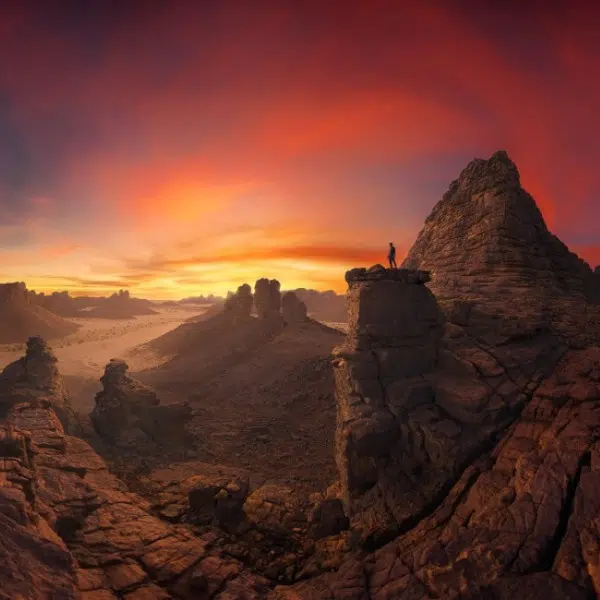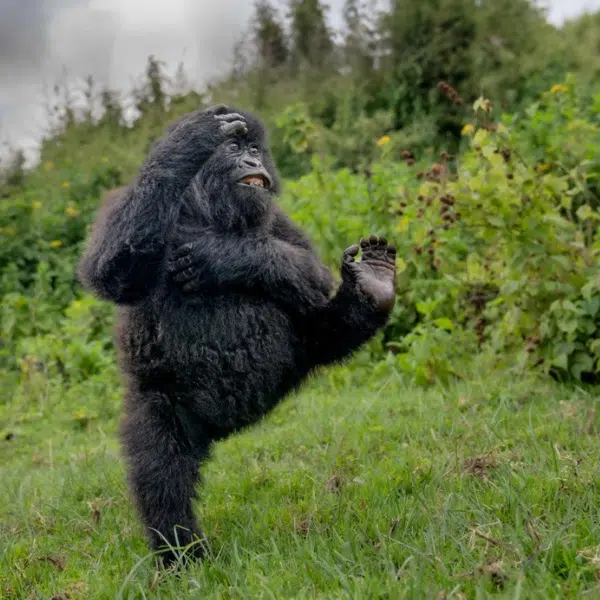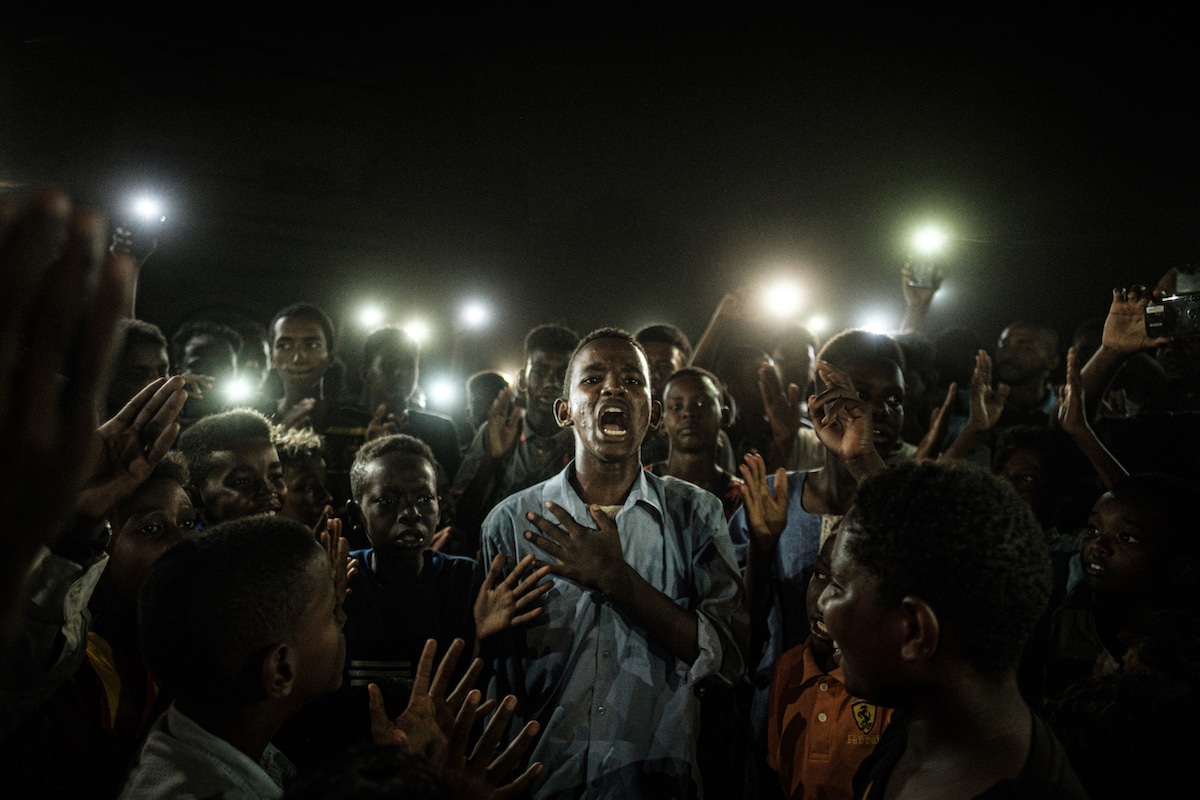
“Straight Voice” © Yasuyoshi Chiba, Japan, Agence France-Presse. World Press Photo of the Year 2020.
“Protests in Sudan began in December 2018 and spread rapidly throughout the country. By April 2019, protesters were staging a sit-in close to army headquarters in the capital Khartoum, and demanding an end to the 30-year rule of dictator Omar al-Bashir. On 11 April, al-Bashir was removed from office in a military coup, and a transitional military government was established. Protests continued, calling for power to be handed to civilian groups. On 3 June, government forces opened fire on unarmed protesters. Scores of people were killed and many more subject to further violence. Three days later the African Union suspended Sudan, in the midst of widespread international condemnation of the attack. The authorities sought to defuse protests by imposing blackouts, and shutting down the internet. Protesters communicated by text message, word of mouth and using megaphones, and resistance to military rule continued. Despite another severe crackdown on 30 June, the pro-democracy movement was eventually successful in signing a power-sharing agreement with the military, on 17 August.”
A moment of peaceful protest earned Japanese photojournalist Yasuyoshi Chiba top honors at the 2020 World Press Photo contest. His image of a young man reading poetry aloud amidst protesters crying out for civilian rule in Sudan was named the 2020 World Press Photo of the Year. In a year filled with turmoil, the photograph—and the hope it inspires—is all the more meaningful.
Chiba is Agence France-Presse (AFP)’s Chief Photographer for East Africa and Indian Ocean and is currently based in Kenya. In June 2019, he was in Sudan during a pivotal moment. Things were coming to a head as people protested against the transitional military government, which had been installed after the 30-year dictatorship of Omar al-Bashir came to an end two months earlier. As people pressed for power to be turned over to civilian groups, officials attempted to diffuse the situations by shutting down the internet and imposing blackouts. However, the people wouldn't let their voices be squashed.
It was the only moment of peaceful protest that Chiba saw while in Sudan, but it was one that left an impression. “I felt their undefeated solidarity like burning embers that remain to flare up again,” he remarked. The haunting photograph also captured the imagination of the jury, sealing its victory.
“Especially in the time that we’re living in when there’s a lot of violence and a lot of conflicts, it’s important that we have an image that inspires people,” said Lekgetho Makola, head of Market Photo Workshop and 2020 Photo Contest jury chair. “We see this young person, who is not shooting, who is not throwing a stone, but reciting a poem. It’s acknowledging, but also voicing a sense of hope.”

“Kho, the Genesis of a Revolt” © Romain Laurendeau, France. World Press Photo Story of the Year 2020.
“Young people make up more than half of Algeria’s population, and according to a UNESCO report, 72% of people under 30 in Algeria are unemployed. Pivotal moments in Algerian history, such as the ‘Black October’ revolt of 1988, have had angry youth at their core. Black October was harshly suppressed—more than 500 people were killed in five days—and was followed by a ‘black decade’ of violence and unrest. Thirty years on, the effects of that decade are still present. In a traumatized country, high unemployment leads to boredom and frustration in everyday life and many young people feel disassociated from the state and its institutions. In neglected working-class neighborhoods such as Bab el-Oued in Algiers, young people often seek refuge in diki—private places that are ‘bubbles of freedom’ away from the gaze of society and from conservative social values. But the sense of community and solidarity is often not enough to erase the trials of poor living conditions. In February 2019, thousands of young people from working-class neighborhoods again took to the streets in what became a nationwide challenge to the reign of long-time president Abdelaziz Bouteflika.
Kho (the word means ‘brother’ in colloquial North-African Arabic) is about the genesis of a revolt. It is the story of the deep unease of youth, who, by daring to challenge authority, inspired the rest of the population to join their action, giving birth to the largest protest movement in Algeria in decades.”
Striving for change is a theme that carries over to the other major winner of the contest. Romain Laurendeau took the award for the 2020 World Press Photo Story of the Year with his series of images depicting the unrest within Algerian youth. By challenging authority, they sparked some of the largest protests the country has ever seen. “It was impossible for a part of me not to recognize myself in these young people,” commented Laurendeau. “They are young but they are tired of this situation and they just want to live like everyone else.”
The French photographer's victory is all the more remarkable when one considers that he suffers from a progressive eye disease that distorts the cornea. In 2009, he underwent a corneal transplant and decided to dedicate his photography exclusively to projects that document the human condition.
In addition to the two grand prizes, the winners of eight categories were announced via social media. Scroll down to see more of the stunning photojournalism from this year's contest.
See more award-winning photojournalism from the 2020 World Press Photo contest.
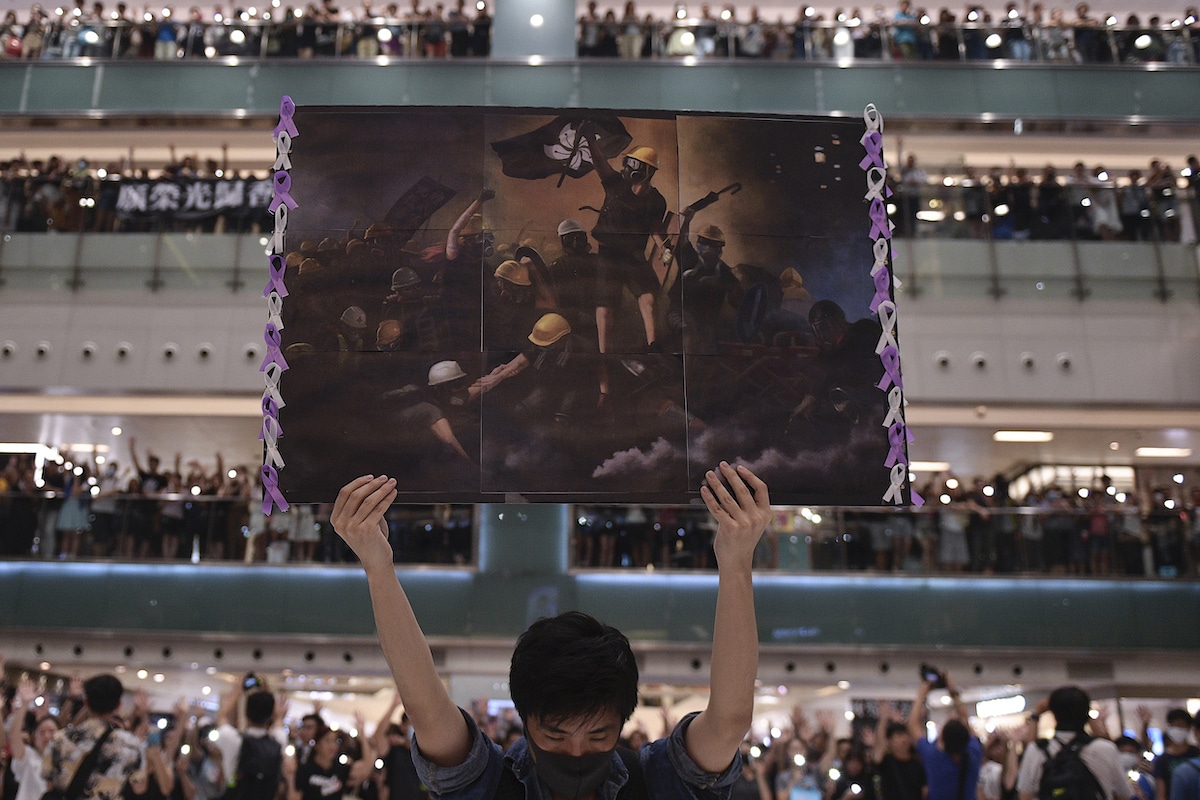
“Hong Kong Unrest” © Nicolas Asfouri, Denmark, Agence France-Presse. General News, Stories, Winner.
“Protests began in Hong Kong at the end of March in response to government proposals to amend existing legislation and allow extradition to mainland China. Anti-government demonstrations gathered momentum over the following weeks as pro-democracy groups united, with students playing a large role in protests and in human-chain rallies. On 12 June, tens of thousands of demonstrators gathered around the Legislative Council building ahead of a debate on the extradition laws, and met with violent opposition from police. Protests continued to escalate, both in frequency and size, as did police countermeasures. The authorities banned the wearing of face masks, and at a demonstration on 1 October, the day marking the 70th anniversary of the declaration of the People’s Republic of China, police fired live ammunition at protesters for the first time. After initially proposing postponements and amendments to legislation, Chief Executive of Hong Kong Carrie Lam eventually announced that she would withdraw the bill. This was done on 23 October, but protesters’ demands had broadened to include implementation of genuine universal suffrage and release of arrested protestors, and unrest continued into 2020.”

“Ethiopian Airlines Flight 302 Crash Site” © Mulugeta Ayene, Ethiopia, Associated Press. Spot News, Stories, Winner.
“Relatives of a victim of the Ethiopian Airlines Flight ET302 crash mourn at a ceremony for those killed, at the Holy Trinity Cathedral in Addis Ababa, Ethiopia, on 17 March 2019, a week after the incident.”

“Saving Orangutans” © Alain Schroeder, Belgium, for National Geographic. Nature, Stories, Winner.
“Mother-substitutes carry orphaned orangutans to a forest school where they will teach them to climb trees, at SOCP Quarantine Centre in Sibolangit, North Sumatra, Indonesia, on 22 January 2019.”
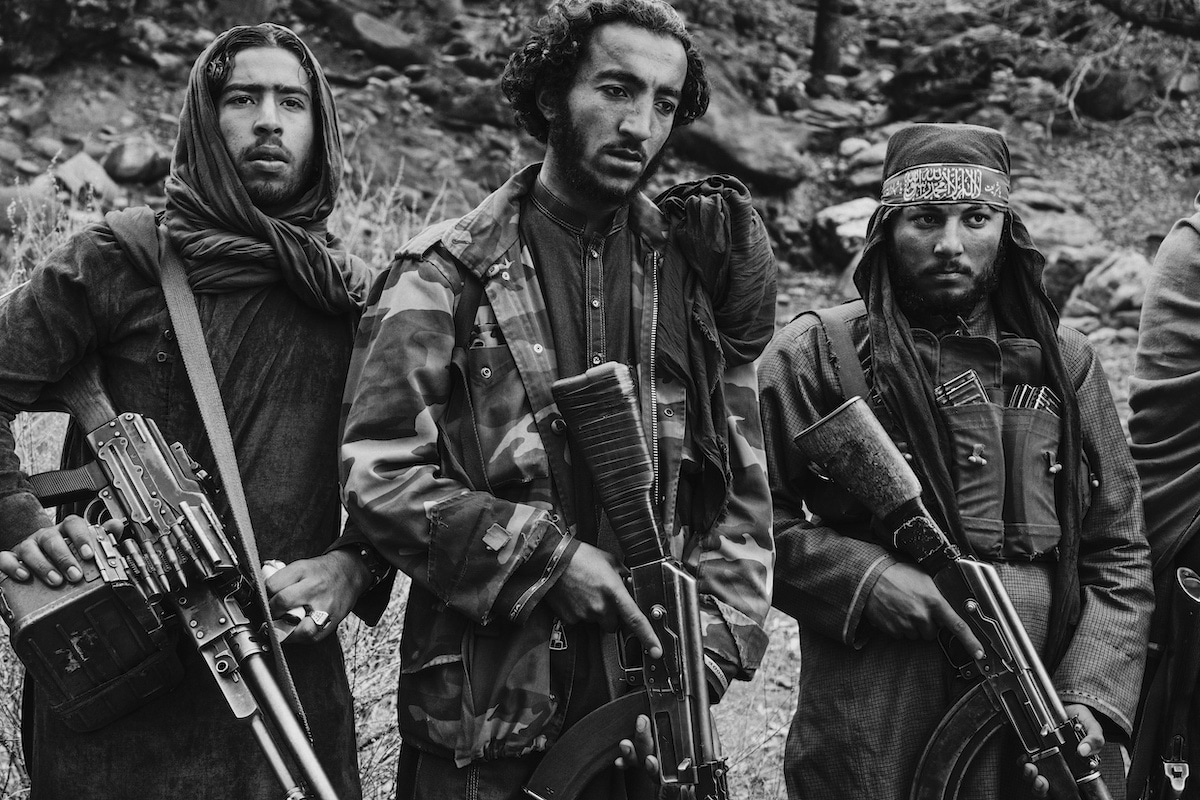
“The Longest War” © Lorenzo Tugnoli, Italy, Contrasto, for The Washington Post. Contemporary Issues, Stories, Winner.
“Taliban fighters parade their equipment in a remote hideout in the Khogyani district in eastern Afghanistan, on 11 December 2019.”

“Cheering the Goal” © Silvia Izquierdo, Peru, Associated Press. Sports, Singles, 2nd Place.
“Fans of Brazil’s Flamengo football team cheer as Gabriel Barbosa scores a goal against defending champions River Plate of Argentina, in the final of the Copa Libertadores, broadcast on giant screens during a watch party at Maracanã Stadium in Rio de Janeiro, Brazil, on 23 November 2019.”

“The Tigers Next Door” © Steve Winter, United States, for National Geographic. Contemporary Issues, Stories, 2nd Place.
“Kevin ‘Doc' Antle poses with his staff in a swimming pool they use in a tiger show, at his Myrtle Beach Safari entertainment facility in South Carolina, United States, on 30 April 2019. Tourists pay upwards of US$399 each to join a morning tour, during which they play and are photographed with cubs.”

“Kawhi Leonard’s Game 7 Buzzer Beater” © Mark Blinch, Canada, for NBAE. Sports, Singles, Winner.
“Kawhi Leonard (squatting, center) of the Toronto Raptors watches his game-winning buzzer-beater shot go into the net, while playing against the Philadelphia 76ers in Game 7 of the Eastern Conference Semifinals of the 2019 National Basketball Association (NBA) Playoffs, at the Scotiabank Arena, Toronto, Canada, on 12 May 2019.”
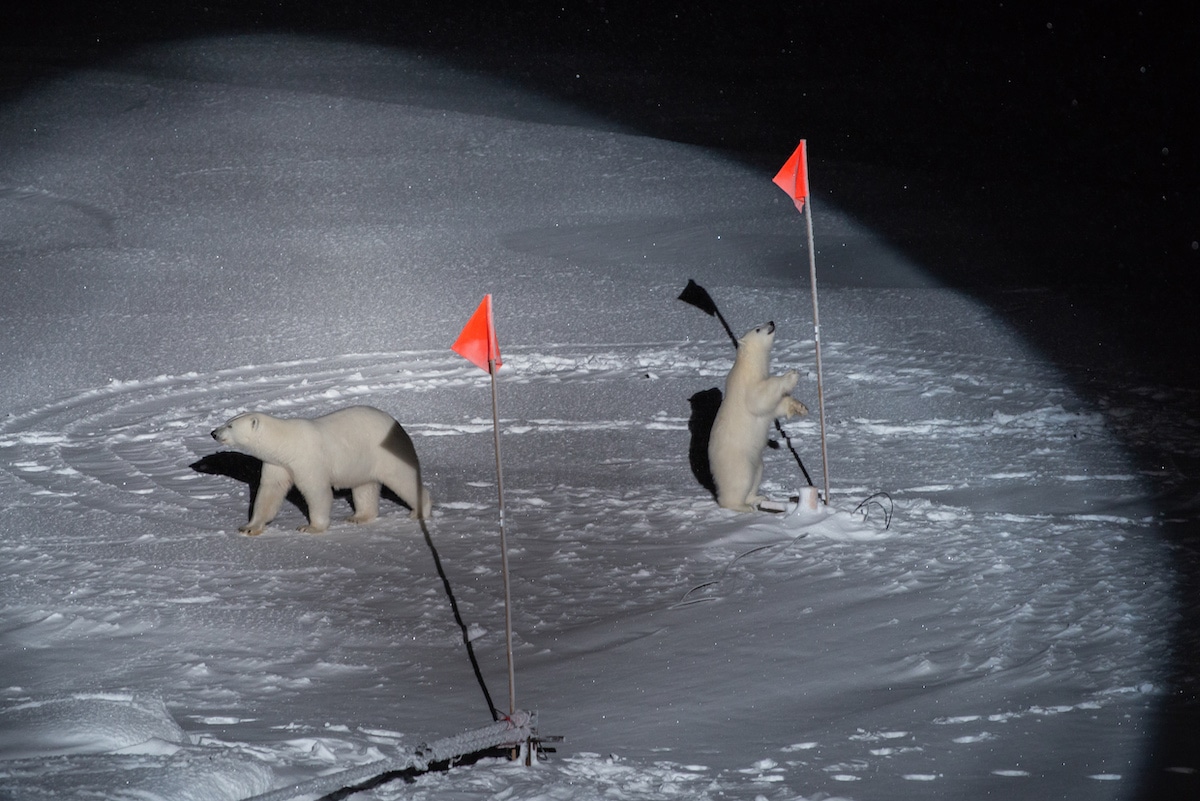
“Polar Bear and her Cub” © Esther Horvath, Hungary, for The New York Times. Environment, Singles, Winner.
“A polar bear and her cub come close to equipment placed by scientists from ‘Polarstern,' a ship that is part of a scientific expedition investigating the consequences of Arctic climate change, in the central Arctic Ocean, on 10 October 2019.”

“Bushfire Evacuation Center” © Sean Davey, Australia, for Agence France-Presse. Contemporary Issues, Singles, 2nd Place.
“Abigail Ferris (in mask) plays with friends at a temporary evacuation center in Bega, New South Wales, Australia, on 31 December 2019. Abigail and her family had been evacuated from a nearby camping spot during bushfires on New Year’s Eve.”

“Black Drag Magic—Portrait of a Drag Artist and Activist” © Lee-Ann Olwage, South Africa. Portraits, Singles, 2nd Place.
“Belinda Qaqamba Ka-Fassie, a drag artist and activist, poses at a shisanyama—a community space where women cook and sell meat—in Khayelitsha, a township located on the Cape Flats, near Cape Town, South Africa, on 4 August 2019.”

“The End of Trash—Circular Economy Solutions” © Luca Locatelli, Italy, for National Geographic. Environment, Stories, Winner.
“Amager Bakke, a waste-to-energy plant that replaced an old coal incineration plant, near Copenhagen, Denmark, produces enough electricity to power at least 60,000 homes and heat 72,000. Advanced filtration technology reduces emissions of noxious nitrogen oxides to almost zero. 4 October 2019.”

“Clash with the Police During an Anti-Government Demonstration” © Farouk Batiche, Algeria, Deutsche Presse-Agentur. Spot News, Singles, Winner.
“Algeria had been embroiled in protests since February. Initially, protests had been aimed at ousting long-time president, Abdelaziz Bouteflika, an 81-year-old veteran of Algeria’s independence struggle who had been in ill-health and not seen in public for some time. Bouteflika resigned in April, handing over to a military-backed caretaker government, but demonstrations continued. Protesters demanded the cancellation of the presidential elections set to take place on 4 July and a return to civilian democracy. They also called for the departure of government officials associated with the Bouteflika administration, including the interim president and prime minister. Protests continued into 2020 without successful resolution.”
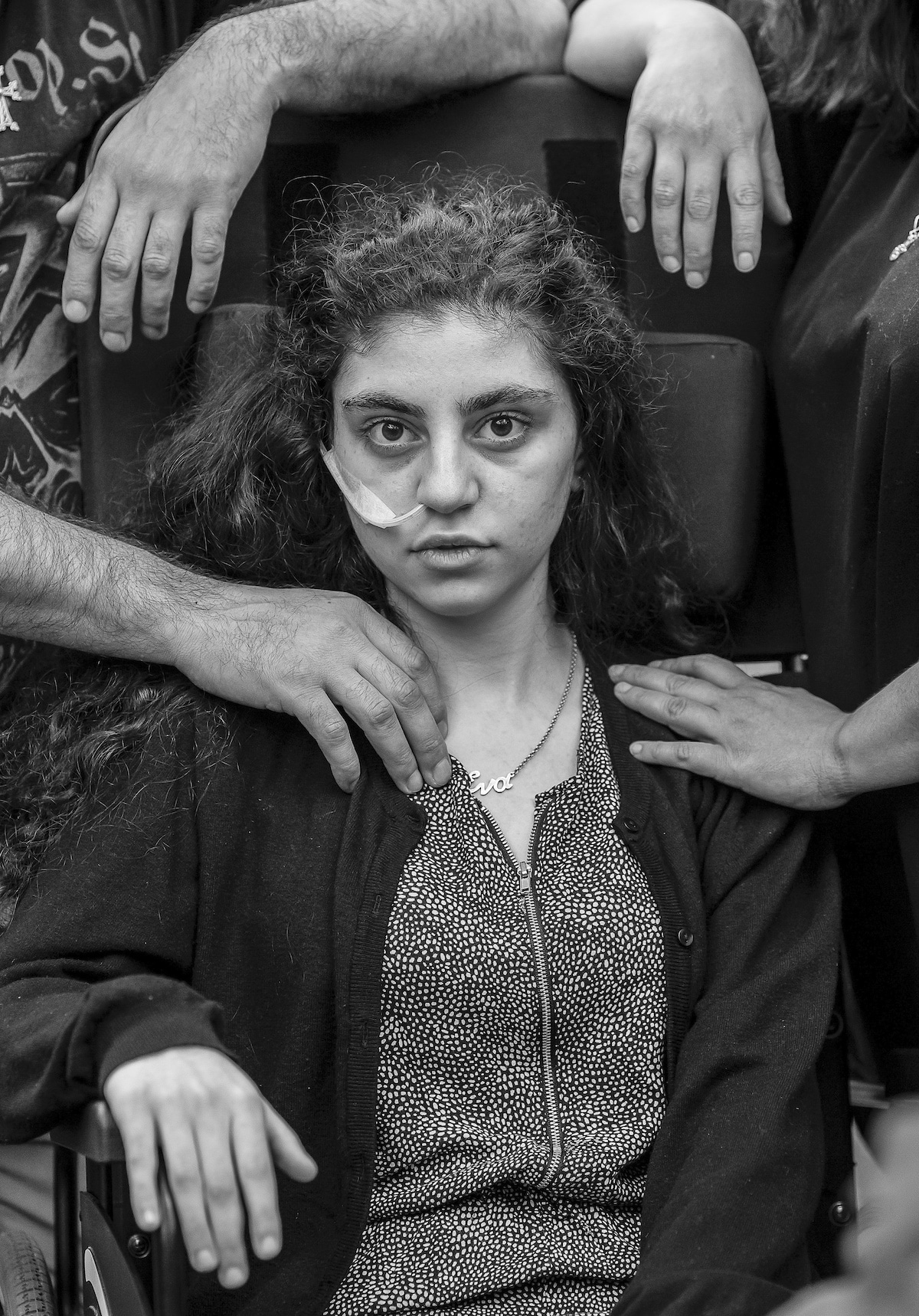
“Awakening” © Tomek Kaczor, Poland, for Duży Format, Gazeta Wyborcza. Portraits, Singles, Winner.
“Resignation Syndrome (RS) renders patients passive, immobile, mute, unable to eat and drink, incontinent and unresponsive to physical stimulus. It affects psychologically traumatized children in the midst of lengthy asylum processes, and seems most common in Roma and Yazidi children as well as those from the Balkans. It was first noted in the late 1990s, and was thought to be confined to Sweden, though cases have since been reported in the offshore refugee detention center run by the Australian government in Nauru. Remission and gradual return to normal function occurs after life circumstances improve. Ewa succumbed to RS while her family were trying for asylum in Sweden and threatened with deportation to Poland, which had been their country of first arrival as refugees. They feared being sent back to Armenia. The family was deported to Poland, despite Ewa’s illness, but she recovered eight months after they arrived.”
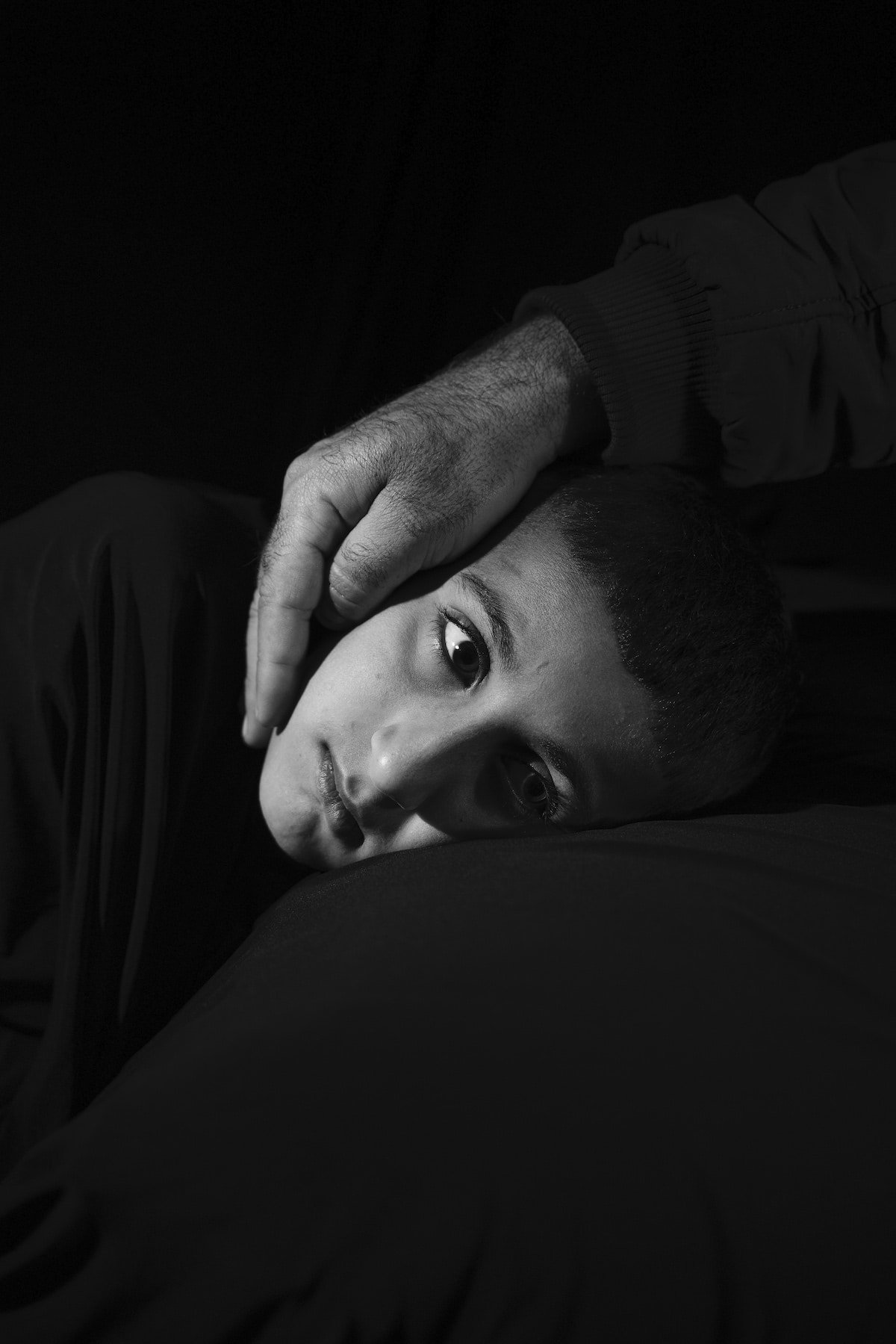
“The Haunted” © Adam Ferguson, Australia, for The New York Times Magazine. Portraits, Stories, Winner.
“Rezan (11), who was kidnapped by the Islamic State Group in 2014 and freed in early 2019, at the Khanke IDP Camp in Dohuk, Iraqi Kurdistan, on 20 April 2019. “
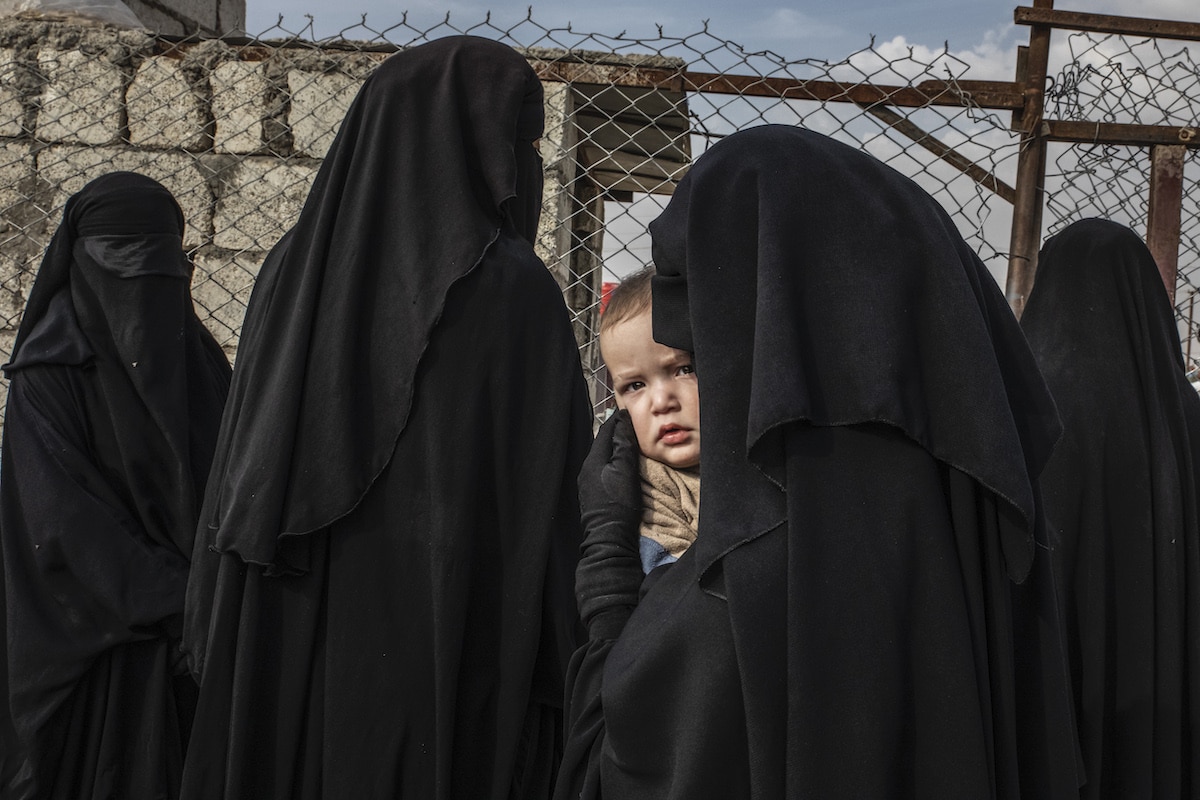
Al-Hol camp section for ISIS foreign fighters women. In the photo, a Russian child in his mother's arms, who together with other foreign women await authorization of going to buy food at the grocery store of the camp. A Russian woman is holding her baby, queueing at the makeshift hospital of the Annex, the side of al-Hol camp where 10.000 people of 48 different foreign nationalities live in the tents.

“Nothing Personal—the Back Office of War” © Nikita Teryoshin, Russia. Contemporary Issues, Singles, Winner.
“IDEX is the biggest defense exhibition and conference in the Middle East, and one of the biggest arms trade-fairs in the world. No official attendance figures are released, but according to UAE state media, the event was expected to draw 1,200 global defense specialists, 1,235 exhibitors and more than 105,000 visitors. Attendees include defense ministers, military chiefs of staff and key government decision-makers, who interact in conference halls, social events and back-office meetings. War is staged in an artificial environment where mannequins and screen images take the place of real people, and with outdoor demonstrations and daily choreographed battle displays on water.”
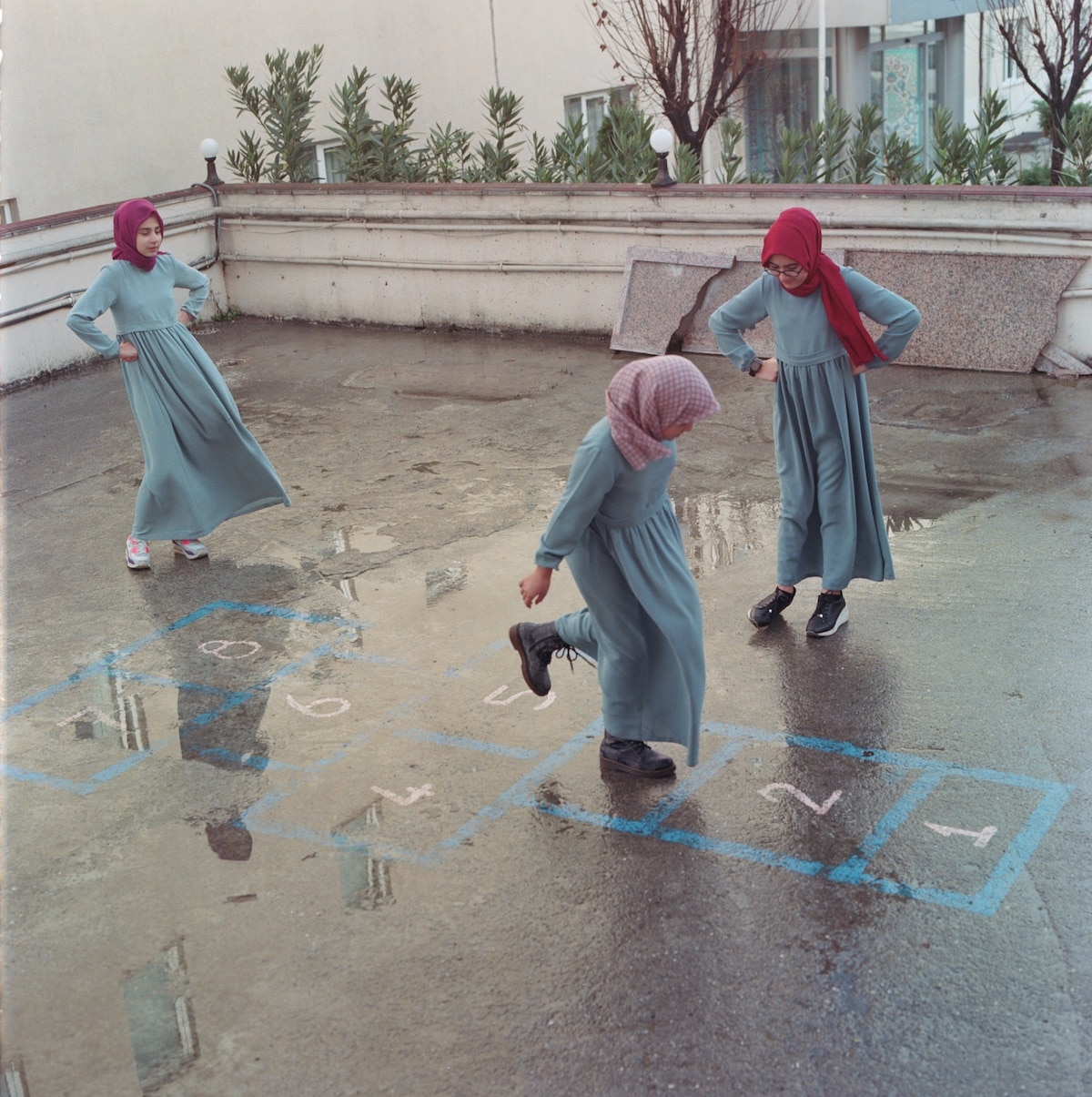
“Hafız: Guardians of the Qur’an” © Sabiha Çimen, Turkey. Long-term Projects, 2nd Place.
“Muslims who completely memorize the Qur’an are allowed to use the title ‘Hafız’ before their names. They believe that whoever memorizes the holy book and follows its teachings will be rewarded by Allah and will rise in status in Paradise. The practice dates back to the days when illiteracy was widespread and paper and vellum were prohibitively expensive, so hafızes were seen as guardians of the holy word, keeping it alive for future generations. The Qur’an has 6,236 verses, and memorizing is usually achieved by repetition and recitation. In Turkey, thousands of Qur’an schools exist for the purpose and many are attended by girls. Ranging in age from eight to 17 years old, most take three or four years to complete a task that requires discipline, devotion and focus. After graduating, most of these girls marry and have families but still retain the holy text word for word.
The photographer attended a Qur’an school with her twin sister when they were 12, and so is able to reveal a world unknown to many. Her project follows the daily lives of boarders at Qur’an schools and shows not only their emotions as they try to memorize the sacred texts, but how they retain the dreams of young women their age, as well as the rule-breaking practices and fun of school life when they are not studying.”

“Final Farewell” © Alain Schroeder, Belgium. Nature, Singles, Winner.
“The body of a month-old orangutan lies on a rescue team’s surgical drape, near the town of Subulussalam, Sumatra, Indonesia. She died soon after being found with her injured mother on a palm oil plantation, on 10 March 2019.”

“Pangolins in Crisis” © Brent Stirton, South Africa, Getty Images, for National Geographic. Nature, Stories, 2nd Place.
“A man reaches for a pangolin that is about to be slaughtered and prepared for a meal in a restaurant on the outskirts of Guangzhou, China, on 4 January 2019. Pangolin meat at the restaurant sells for around US $376 per kilogram.”

“Rise from the Ashes” © Wally Skalij, United States, Los Angeles Times. Sports, Stories, Winner.
“Emmie Morgan cheers as first responders are honored during the Paradise Bobcats’ first game on 23 August 2019 since the fire that devastated their town.
The November 2018 Camp Fire was the most destructive wildfire in Californian history. Paradise was almost completely burnt to the ground, and 90% of its population were dispersed to towns and cities across the US, but the fire stopped at the edge of Paradise High School’s football field, sparing it and the surrounding sports buildings. Nearly everyone on the team lost their home, but players began returning when coach Rick Prinz started practices, some commuting for up to 90 minutes to get there. They saw reviving the team as a part of rebuilding the community. The Bobcats went on to have a successful season, playing undefeated until losing the final for the championship at the end of the year.”

“Australia’s Bushfire Crisis” © Matthew Abbott, Australia, Panos Pictures, for The New York Times. Spot News, Stories, 2nd Place.
“Aluminum, which melts at 660.3℃, has streamed from a burning car in Conjola Park, a town where bushfires razed more than 89 properties, in New South Wales, Australia, on 31 December 2019.”












































































